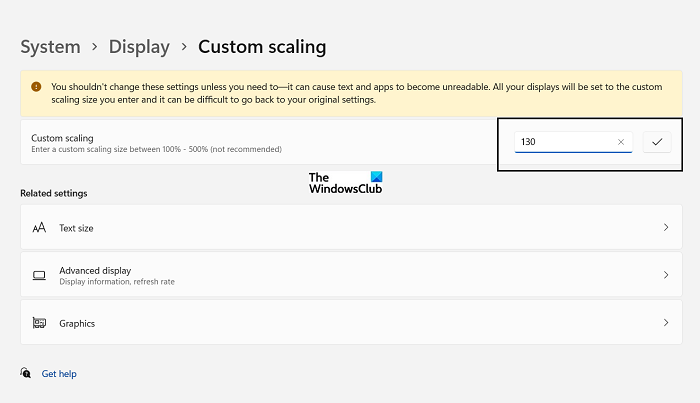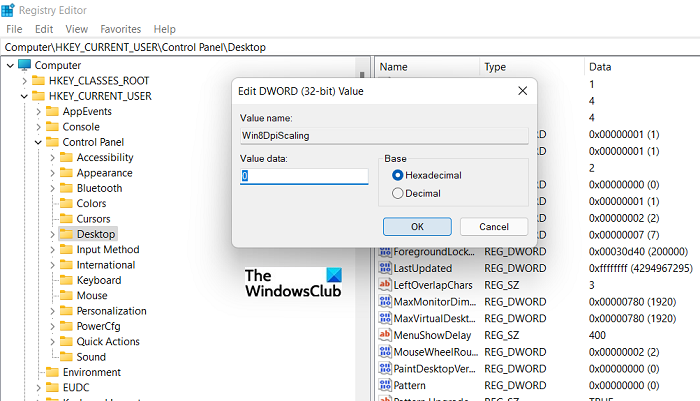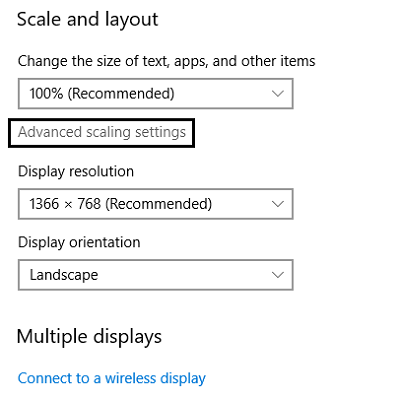In this article, we will show you how to change the DPI scaling level on your Windows 11 or Windows 10 computers. DPI, short for Dots Per Inch is a measure of the number of pixels accommodated in each inch of your monitor’s display. It’s a metric that decides your screen resolution and is a function of your monitor size; bigger the size, lower the DPI, and vice versa. When the DPI is high, it means your screen has to fit in a higher number of pixels, which causes desktop icons to appear smaller.
Windows computers generally ensure that the default DPI level they set is satisfactory to its users. Except for a select few premium devices, the DPIs of which can be as high as 200, most DPIs range between 95-110. These DPIs have a scaling factor of 100% and if you want to squeeze out every possible ounce of quality imagery from your computer’s monitor, you can adjust this DPI scaling level for icons and texts on your display to appear larger or smaller. That is what we will be discussing today.
How to adjust DPI scaling level in Windows 11?
Here’s a list of things we will be talking about.
- How to change DPI scaling level on a specific monitor
- How to set a custom DPI scaling level on multiple monitors
- How to change DPI scaling level using the Registry Editor
How to change DPI scaling level on a specific monitor in Windows 11

If you’re running a multi-monitor setup and want the DPI scaling changes to apply to one specific monitor, here are the steps you need to follow:
- Press Win+I to open Settings
- From the options pane to your left, click on System and further select Display
- Select the display number that you want to change to reflect on and adjust the scale under Scale & layout
- When finished, you can close Settings to save the change.
How to set a custom DPI scaling level on multiple monitors in Windows 11
To set a custom DPI scaling level on multiple monitors:
- Open Windows 11 Settings
- Click on System from the options to your left and then click on Display
- Now you have to decide whether or not to implement Custom Scaling.
- If you do choose to do so, click on Scale and set the size of the custom scaling. Make sure it ranges between 100-500%
- Save it and sign out for the change to take effect
- If you choose not to go for Custom Scaling, select Turn off custom scaling and sign out.
- This will sign you out and the new settings will be filed
How to change DPI scaling level using the Registry Editor in Windows 11/10

An alternate way of registering a change in your DPI scale across displays is to use the Registry Editor. Here are the steps you need to follow:
- Press the Win+R key combination to open the Run command and enter Regedit.exe
- Paste the following location on the address bar at the top
HKEY_CURRENT_USER\Control Panel\Desktop
- Here, locate a DWORD named LogPixels and right-click to modify it
- Change the Base from Hexadecimal to Decimal and in the Value Data section, enter a value between 96 and 480. A 100% scale requires the value to be 96 and it goes up to 500%, so you can change the value on a proportionate basis
- Scroll down a bit and modify a DWORD value named Win8DpiScaling
- Enter 0 in the Value Data box if you want to turn off custom scaling and 1 if you want to turn it on
You can now close the Registry Editor and sign in & out to implement the change.
How to change DPI scaling level in Windows 10?

If you’re a Windows 10 user who isn’t looking to upgrade but still wants to scale up your DPI setting, you can do so by following the steps below:
- Open Settings with the Win+I keyboard shortcut
- Select the System section here
- From the options to your left here, select Display
- You’ll find a Scale and Layout header here, but the only option to scale it up is up to 125%. If you want to enable custom scaling, click on Advanced scaling settings
If you want to know more about customizing your DPI scaling options and how you can use them to fix blurriness issues with your desktop, read about fixing Windows Scaling issues for High-DPI devices here.
DPI scaling improvements in Windows
There are High-dots-per-inch (DPI) scaling improvements introduced. It has been observed that desktop applications can appear blurred or sized incorrectly when they are made to run on high-DPI displays or when using high DPI displays in combination with standard-DPI displays. This is particularly noticeable while using remoting technologies such as Remote Desktop Protocol (RDP). The high-DPI improvements in Windows intend to address these issues. Few of under-the-hood improvements like high-DPI improvements:
- Improvements for desktop application developers
- Improvements for end-users
The first change is effected by introducing a new capability of automatic per-monitor DPI scaling for desktop UI frameworks. This is done by adding a new added a new awareness context, (DPI_AWARENESS_CONTEXT_PER_MONITOR_AWARE_V2) which we refer to as per-monitor version 2 (PMv2)
PMv2 is technically a DPI_AWARENESS_CONTEXT. It is particularly designed to offer per-monitor scaling functionality that was missing from the original implementation of per-monitor awareness. This context enables the following:
- Child window DPI change notifications
- Scaling of non-client area
- Automatic DPI scaling for dialogs
- Fine-grained control over dialog scaling
Improvements for end users intend to make your life as a Windows user better when it comes to using Windows in mixed-DPI environments.
DPI-scaling overrides: There are instances where you might want to run desktop applications that don’t render well on a high-DPI display. In such cases, you might want to force the application to run as a DPI-unaware process. This would result in the application being blurry. So, although blurry, the action would render an unusable application usable. You can enable this functionality in the .exe properties:
System (enhanced)” DPI scaling: There are applications that resist changes in DPI scaling. Microsoft wants to make it a smooth affair. As such, it is looking at ways where Windows can do this job of DPI scaling, automatically. A new functionality has been introduced which renders text results crisply on high-DPI display for GDI-based apps only. So, for applications that are GDI-based, Windows can now DPI scale them on a per-monitor basis. This means that these applications will automatically configure themselves to become per-monitor DPI aware. Microsoft has enabled GDI scaling by default for some in-box apps. For example, the Microsoft Management Console (mmc.exe). This means that many in-box Windows snap-ins, such as Device Manager, will benefit from this feature. Other apps that will benefit from this capability include,
Child-window DPI scaling: Mixed-mode DPI scaling introduced in the Windows 10 Anniversary Update enabled users to have different DPI scaling modes within each top-level window in an application. The scaling, however, lacked support for child-window DPI scaling. This scheme, unfortunately, continues to remain unchanged in Windows and it lacks support for child-window DPI scaling
Desktop icons: A major irritant while running the display in ‘Extend’ mode was the inability of the Desktop icons to align themselves or DPI scale with multiple displays containing different DPI/display scaling values. Update to the OS resolves this much nagging issue.
High-DPI developer documentation: The high-DPI documentation which was available on MSDN till now has turned irrelevant and has now become a thing of the past. Why? The guides for writing per-monitor DPI-aware applications were written keeping in mind Windows 8.1 period. Things have evolved and changed a lot ever since then. Many Windows API DPI sensitivities have not been thoroughly documented. All of this required a thorough clean-up and building things from the ground up.
We hope that this was able to satisfactorily answer all your queries about DPI scaling levels on Windows 11 and how you can change them to your convenience.